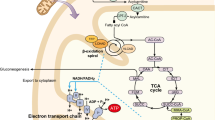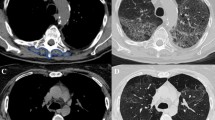Abstract
Purpose
We performed a cross-sectional study of physical changes in HIV-infected adults to evaluate the role of ultrasonography for the diagnosis of lipodystrophy.
Materials and methods
Sixty HIV-infected patients were recruited from 1 June to 31 December 2006. A total of 34 patients were included in the lipodystrophy group and 26 in no lipodystrophy group. Thickness of subcutaneous fat was measured twice with a high-frequency (15 MHz) transducer by transverse scans at four skin-based reference points: the periumbilical region, the brachial region, the crural region and the malar region. Visceral fat thickness was determined with a low-frequency (3.75 MHz) transducer at two skin reference points: perirenal fat diameter and visceral abdominal fat.
Results
Compared with HIV-infected patients without lipodystrophy, those with lipoatrophy or mixed lipodystrophy had thinner facial, arm and leg fat, whereas patients with lipodystrophy showed thicker intra-abdominal fat. The median of the ratio between intra-abdominal fat and subcutaneous fat and between perirenal fat diameter and body mass index in the lipodystrophy group was higher than in the no lipodystrophy group. The measurements of brachial, malar and crural fat were significantly lower in patients with lipodystrophy.
Conclusions
We consider the ratio between visceral adipose tissue and subcutaneous adipose tissue and the thickness of malar fat to be the most useful ultrasonographic parameters for the early diagnosis of lipodystrophy in HIV-infected patients on highly active antiretroviral therapy.
Riassunto
Obiettivo
Abbiamo disegnato uno studio cross-sezionale sulle alterazioni morfologiche osservate nei soggetti adulti con infezione da HIV al fine di valutare il ruolo dell’ecografia nella diagnosi di lipodistrofia.
Materiali e metodi
Dal 1 giugno al 31 dicembre 2006 sono stati selezionati 60 pazienti con infezione da HIV. Trentaquattro pazienti sono stati inclusi nel gruppo con lipodistrofia e 26 nel gruppo senza lipodistrofia. È stato misurato lo spessore del tessuto adiposo sottocutaneo mediante scansione trasversale ad alta frequenza (15 MHz) in corrispondenza di quattro punti di repere: la regione periombelicale, brachiale, crurale e malare. Lo spessore del tessuto adiposo viscerale è stato valutato mediante scansioni a bassa frequenza (3,75 MHz) in corrispondenza di due punti di repere: il diametro peri-renale ed il grasso addominale.
Risultati
In relazione ai pazienti con infezione da HIV non lipodistrofici, i pazienti che hanno sviluppato lipodistrofia mista o lipoatrofia hanno un minor spessore di tessuto adiposo a carico del volto e degli arti, mentre soggetti lipodistrofici hanno un maggior accumulo di grasso viscerale. La mediana del rapporto tra spessore di tessuto adiposo viscerale e addominale superficiale e del rapporto tra grasso peri-renale ed indice di massa corporea è significativamente più alta nei pazienti lipodistrofici.
Conclusioni
Consideriamo il rapporto tra tessuto adiposo viscerale (VAT) e tessuto adiposo sottocutaneo (SAT) e lo spessore del grasso malare come i parametri ecografici più utili per effettuare una diagnosi precoce di lipodistrofia in pazienti con infezione da HIV in terapia antiretrovirale.
Similar content being viewed by others
References/Bibliografia
Palella FJ, Delaney KM, Moorman AC et al (1998) Declining morbidity and mortality among patients with advanced human immunodeficiency virus infection. HIV outpatient Study Investigators. N Engl J Med 338:853–860
Behrens G, Dejam A, Schmidt H et al (1999) Impaired glucose tolerance, beta cell function and lipid metabolism in HIV patients under treatment with protease inhibitors. AIDS 13:F63–F70
Carr A, Cooper DA. (2000) Adverse effects of antiretroviral therapy. Lancet 356:1423–1430
Carr A, Samaras K, Burton S et al (1988) A syndrome of peripheral lipodystrophy, hyperlipidaemia and insulin resistance in patients receiving HIV protease inhibitors. AIDS 12:F51–F58
Lichtenstein KA, Ward DJ, Moorman AC et al (2001) Clinical assessment of HIV associated lipodystrophy in an ambulatory population. AIDS 15:1389–1398
Schwenk A (2002) Methods of assessing body shape and composition in HIV associated lipodystrophy. Curr Opin Infect Dis 15:9–16
Carr A, Samaras K, Thorisdottir A et al (1999) Diagnosis, prediction, and natural course of HIV-1 proteaseinhibitor-associated lipodistrophy, hyperlipidaemia, and diabetes mellitus: a cohort study. Lancet 353:2093–2099
Martinez E, Bianchi L, Garcia-Viejo MA et al (2000) Sonographic assessment of regional fat in HIV-infected people. Lancet 356:1412–1413
Saint-Marc T, Partisani M, Poizot-Martin I et al (2000) Fat distribution evaluated by computed tomography and metabolic abnormalities in patients undergoing antiretroviral therapy: preliminary results of the LIPOCO study. AIDS 14:37–49
Mallon PWG, Miller J, Cooper DA, Carr A (2003) Prospective evaluation of the effect of antiretroviral therapy on body composition in HIV-1 infected men starting therapy. AIDS 17:971–979
Gulizia R, Vercelli A, Gervasoni C et al (2006) Controversy concerning role of ultrasonographic lipoatrophy assessments in HIV patients. AIDS 20:789–790
Moyle GJ, Lysakova L, Brown S et al (2004) A randomized open-label study of immediate versus delayed polylactic acid injections for the cosmetic management of facial lipoatrophy in persons with HIV infection. HIV Med 5:82–87
Asensi V, Martin-Roces ER, Carton JA et al (2004) Perirenal fat diameter measured by echography could be an early predictor of lipodystrophy in HIV-type 1 infected patients receiving highly active antiretroviral therapy. Clin Infect Dis 39:240–247
Asensi V, Martin-Roces ER, Collazos J et al (2006) Association between physical and Echographic fat thickness assessments and a lipodystrophy grading scale in lipodystrophic HIV patients: pratical implications. AIDS Res Hum Retroviruses 22:830–836
Blanch J, Rousaud A, Martinez E et al (2002) Impact of lipodystrophy on the quality of life of HIV-1 infected patients. J Acquir Immune Defic Syndr 31:404–407
Satler F (2003) Body habitus changes related to lipodystrophy. Clin Infect Dis 36[Suppl 2]:S84–S90
Coress IB, Nicholas PK, McGibbon CA et al (2004) Weight change, body image, and quality of life in HIV disease: a pilot study. Appl Nurs Res 17:292–296
Burgoyne R, Collins E, Wagner C et al.(2005) The relation between lipodystrophy associated body changes and measures of quality of life and mental health for HIV-positive adults. Qual Life Res 14:981–990
Carey D, Wand H, Martin A et al (2005) Evaluation of ultrasound for assessing facial lipoatrophy in a randomized, placebo-controlled trial. AIDS 19:1325–1327
Zylberger H, Nalpas B, Pol S et al (2000) Is there a relationship between hepatitis C virus infection and antiretroviral-associated lipoatrophy? AIDS 14:2055–2065
Torti C, Patroni A, Tinelli C et al (2002) Influence of hepatitis C virus coinfection on lipid abnormalities in HIV-positive patients after highly active antiretroviral therapy. J Acquir Immune Defic Syndr 29:315–317
Rodriguez-Guardado A, Maradona JA, Asensi V et al (2003) Hepatitis C in patients with HIV infection and lipodystrophy. J Acquir Immune Defic Syndr 32:348–349
Sulkowski MS, Mehta SH, Torbenson M et al (2005) Hepatic steatosis and antiretroviral drug use among adults coinfected with HIV and hepatitis C virus. AIDS 6:585–592
Pol S, Lebray P, Vallet-Pichard A (2004) HIV infection and hepatic enzyme abnormalities: intrincacies of the pathogenic mechanisms. Clin Infect Dis 38[Suppl 2]:S65–S72
Miller KD, Cameron M, Wood LV et al (2000) Lactic acidosis and hepatic steatosis associated with use of stavudine: report of four cases. Ann Intern Med 133:192–196
Fortgang IS, Belitsos PC, Chaisson RE et al (1995) Hepatomegaly and steatosis in HIV-infected patients receiving nucleoside analog antiretroviral therapy. Am J Gastroenterol 90:1433–1436
Lonardo A, Adinolfi LE, Loria P et al (2004) Steatosis and hepatitis C virus: mechanisms and significance for hepatic and extrahepatic disease. Gastroenterology 126:586–597
Mehta SH, Moore RD, Thomas DL et al (2003) The effect of HAART and HCV infection on the development of hyperglycemia among HIV-infected persons. J Acquir Immune Defic Syndr 33:577–584
Gulizia R, Brunetti E, Gervasoni C et al (2005) Sonographic assessment of lipodystrophy in HIV-infected patients: some open questions. Clin Infect Dis 40:323–324
Author information
Authors and Affiliations
Corresponding author
Rights and permissions
About this article
Cite this article
Grima, P.F., Chiavaroli, R. & Grima, P. Ultrasonographic assessment of lipodystrophy in HIV-1-infected patients. Radiol med 114, 141–151 (2009). https://doi.org/10.1007/s11547-008-0333-y
Received:
Accepted:
Published:
Issue Date:
DOI: https://doi.org/10.1007/s11547-008-0333-y




